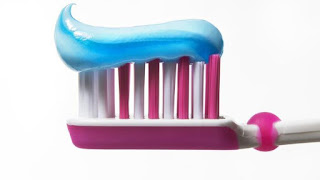Go to any supermarket or big box discount store across Denver, and you'll be presented with shelves full of toothpaste options.
Some even have entire aisles dedicated to oral hygiene.
How do you decide on which toothpaste is right for you and your family?
Today, Bertagnolli Dental in Westminster is here to tell you the truth about toothpaste, its ingredients, and the adverse effects you should know.
Some even have entire aisles dedicated to oral hygiene.
How do you decide on which toothpaste is right for you and your family?
Today, Bertagnolli Dental in Westminster is here to tell you the truth about toothpaste, its ingredients, and the adverse effects you should know.
Which toothpaste is right for me?
Toothpaste is separated into subcategories. In most stores, you’ll find whitening toothpaste, tartar control toothpaste, fluoride-free toothpaste, kids toothpaste and toothpaste for sensitive teeth.
Some people will base their toothpaste choice on their individual needs. This can mean buying a different toothpaste for each member of the family. Others will choose their toothpaste based on the flavor and even price.
Some people will base their toothpaste choice on their individual needs. This can mean buying a different toothpaste for each member of the family. Others will choose their toothpaste based on the flavor and even price.
Does it pay to be loyal to one brand of toothpaste, or should you just buy whatever happens to be on special that day?
The harsh reality is that toothpaste is mainly a cosmetic product. Despite the boasts in toothpaste commercials, the truth about toothpaste is that it does not contribute significantly to oral hygiene.
The harsh reality is that toothpaste is mainly a cosmetic product. Despite the boasts in toothpaste commercials, the truth about toothpaste is that it does not contribute significantly to oral hygiene.
What toothpaste does is create foam and gives your mouth a fresh feeling. We associate a lather or foamy sensation with soap and cleanliness. The strong minty flavor incorporated into most toothpaste gives the whole mouth a crisp, clean, and fresh taste, temporarily at least.
While toothpaste certainly has a pleasing psychological effect, it does not necessarily impact how clean your teeth are after using it.
While toothpaste certainly has a pleasing psychological effect, it does not necessarily impact how clean your teeth are after using it.
In a clinical study to measure the properties of whitening toothpaste, researchers at the University of Bristol Dental School found that there was no difference between the whitening toothpaste, generic toothpaste and plain water at inhibiting stains.
The whitening toothpaste produced slightly better results than generic toothpaste and plain water at removing stains, however, it was not deemed capable enough to be clinically relevant.
The whitening toothpaste produced slightly better results than generic toothpaste and plain water at removing stains, however, it was not deemed capable enough to be clinically relevant.
What is in toothpaste?
Your typical toothpaste will typically contain the following ingredients:
Detergents - These create the foamy lather we mentioned earlier. This does not technically help to remove plaque from your teeth, but it does create a pleasing sensation.
Abrasives - Calcium carbonate and dehydrated silica gel help to physically scrub the surface of the teeth and remove food particles. Brushing too hard and fast without using the correct technique can wear down your teeth and remove some of the enamel.
Fluoride - This remineralizes the enamel of your teeth, making them stronger and more resistant to decay. This is one of the most important ingredients of toothpaste, and sometimes the only true active ingredient. Some people are wary of fluoride's effects and try to avoid it, even though it is effective in preventing cavities.
Flavorings - Usually menthol based flavors and sweeteners such as saccharin are used to make toothpaste palatable. Toothpaste does not usually contain sugar, even though you can find sweet bubblegum and fruit-flavored tubes of toothpaste marketed towards children.
Specially formulated tartar control toothpaste is designed to prevent the buildup of hardened mineral plaques or 'tartar' sometimes found on the inner surfaces of the teeth.
They usually contain ingredients called pyrophosphates – tetrasodium or tetrapotassium pyrophosphates are the compounds added to toothpaste to fight the formation of tartar or calculus plaques.
They usually contain ingredients called pyrophosphates – tetrasodium or tetrapotassium pyrophosphates are the compounds added to toothpaste to fight the formation of tartar or calculus plaques.
Unfortunately, according to the Houston Health Science Center Dental Branch, this type of toothpaste can cause irritation in some users. Pyrophosphates create higher than usual levels of alkalinity in the mouth, to which some people can be sensitive.
Toothpaste for sensitive teeth also contains an added ingredient, potassium nitrate. This compound desensitizes teeth and reduces the feeling of discomfort caused by hot and cold temperatures or sugary foods. Unfortunately, by using this additive, you may be just masking the pain of a cavity or serious issue requiring proper dental care and treatments.
Get in touch today, and let us take fantastic care of your teeth.
So, what's best for my teeth?
While this information does not give you the green light to skip daily brushings, we also recommend a flossing regimen and seeing our dentists here at Bertagnolli Dental regularly.Get in touch today, and let us take fantastic care of your teeth.


